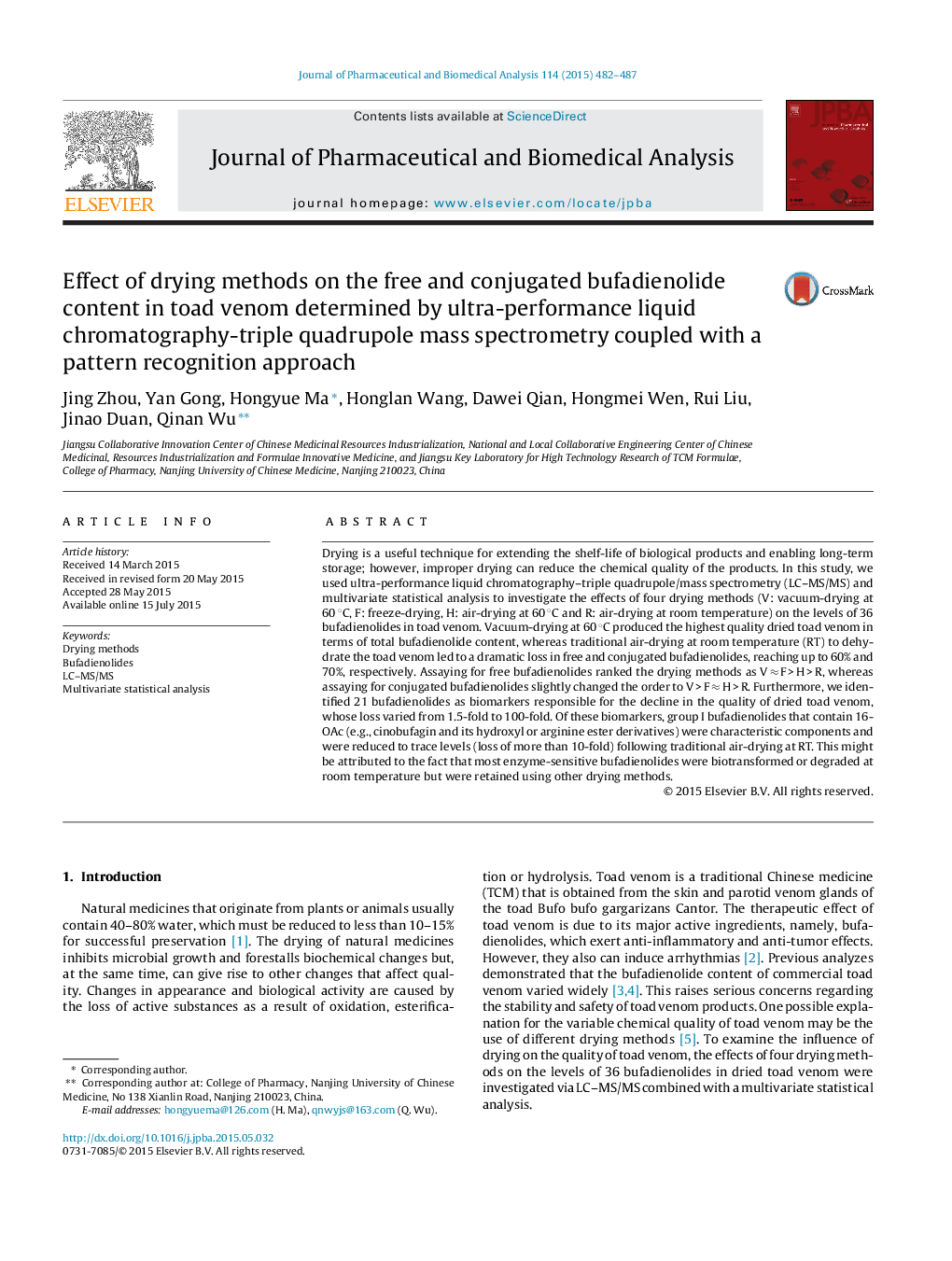| کد مقاله | کد نشریه | سال انتشار | مقاله انگلیسی | نسخه تمام متن |
|---|---|---|---|---|
| 1220849 | 1494621 | 2015 | 6 صفحه PDF | دانلود رایگان |
• The level of 36 bufadienolides in dried toad venom was determined using LC–MS/MS.
• Vacuum-drying at 60 °C produced the highest quality of dried toad venom.
• Air-drying at room temperature (RT) caused the loss in bufadienolide content.
• Cinobufagin and its derivatives decreased following traditional air-drying at RT.
Drying is a useful technique for extending the shelf-life of biological products and enabling long-term storage; however, improper drying can reduce the chemical quality of the products. In this study, we used ultra-performance liquid chromatography–triple quadrupole/mass spectrometry (LC–MS/MS) and multivariate statistical analysis to investigate the effects of four drying methods (V: vacuum-drying at 60 °C, F: freeze-drying, H: air-drying at 60 °C and R: air-drying at room temperature) on the levels of 36 bufadienolides in toad venom. Vacuum-drying at 60 °C produced the highest quality dried toad venom in terms of total bufadienolide content, whereas traditional air-drying at room temperature (RT) to dehydrate the toad venom led to a dramatic loss in free and conjugated bufadienolides, reaching up to 60% and 70%, respectively. Assaying for free bufadienolides ranked the drying methods as V ≈ F > H > R, whereas assaying for conjugated bufadienolides slightly changed the order to V > F ≈ H > R. Furthermore, we identified 21 bufadienolides as biomarkers responsible for the decline in the quality of dried toad venom, whose loss varied from 1.5-fold to 100-fold. Of these biomarkers, group I bufadienolides that contain 16-OAc (e.g., cinobufagin and its hydroxyl or arginine ester derivatives) were characteristic components and were reduced to trace levels (loss of more than 10-fold) following traditional air-drying at RT. This might be attributed to the fact that most enzyme-sensitive bufadienolides were biotransformed or degraded at room temperature but were retained using other drying methods.
Figure optionsDownload as PowerPoint slide
Journal: Journal of Pharmaceutical and Biomedical Analysis - Volume 114, 10 October 2015, Pages 482–487
